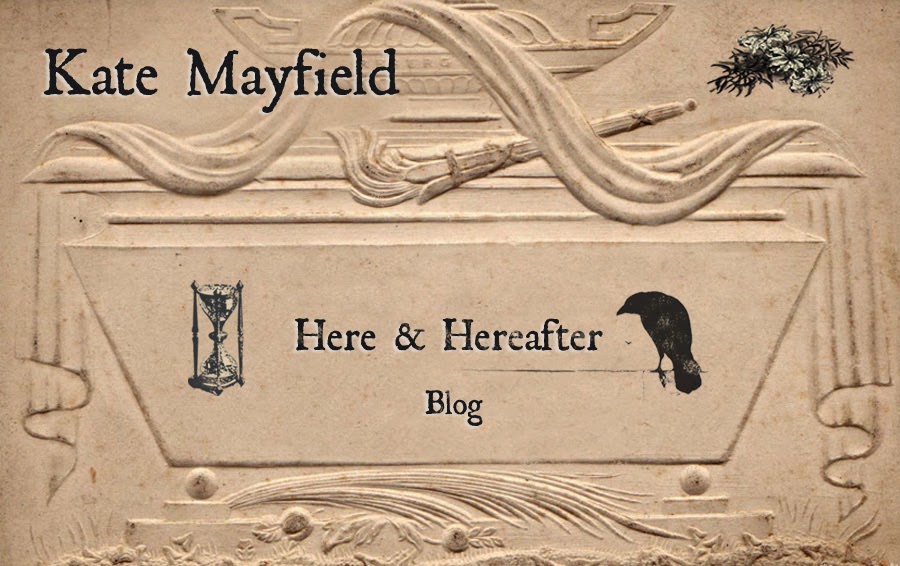
For many years after we moved out of the funeral home, I couldn’t bear to see a gladiola. My gladiola aversion developed because it was the least expensive funerary flower and there was never a funeral in our home without their spiky blooms. Carnations may have cost a little less, but bucket loads were needed to create an impressive arrangement. A spray of tall gladiolas demanded attention and it didn’t take an imaginative florist to throw a few together. I’m not accusing the town’s citizens of being cheap, but good lord, fill several airplane hangars full of gladiolas and you get the picture. Maybe you’ve noticed that many things left in a sale, whether it’s a kitchen utensil or a cashmere wrap, are often orange. The same applies to gladiolas. If you ever want to ruin my day just send me orange gladiolas.
The Shandihar cave in Iraq was excavated in 1957. Neanderthal remains were thought to have been buried with flowers, suggesting that the idea of funerary flowers originated there 60,000 years ago. Alas, it was later argued that animals that stored seeds and pollen was the most likely explanation for the remains. The exact origin of funereal flowers is still debatable.

The man who took over for President Lincoln after his assassination was President Andrew Johnson. After two failed impeachment attempts and a lacklustre post presidency, at his request he was buried wrapped in an American flag with a copy of the constitution placed under his head. But there was the problem of his swiftly decomposing corpse. His undertaker, Lazarus Shepard, now there’s a name for an undertaker, who ironically was Knoxville, Tennessee’s first embalmer, did not embalm the president. By the day of the funeral the air surrounding the president was so unbearable that Lazarus Shepard literally buried the president’s coffin under a massive blanket of highly fragrant flowers to mask the odour.

On the American mid-West prairie in the early 19th Century, families chose Flower Ladies as honorary assistants. With the same clout as a pallbearer, usually six women bore the responsibility of carrying the flowers from the funeral to the cemetery and then carefully arranged them at the burial site. This custom died out, so to speak, when family and friends began to spread out and live farther apart, which begs the question, why didn’t the pallbearer custom die out. Hmm.

In the early 20th century, the practice of hosting funerals in flower gardens became common. Some funeral home directors brought the garden inside, conducting services in solariums, with waterfalls, live plants, flowers and even birds. I can’t tell you how happy I am that this particular practice was not in vogue while my father was in the business.

There was a frenetic atmosphere in our funeral home before the doors opened to allow the first mourners in, especially if it was a big funeral. A large funeral meant more of everything, more people, more chairs, more food, and of course more flowers. Florists scurried quickly through the hallway laden with their flower deliveries, stealing looks at each other’s arrangements, checking out the competition. My father set the stage, placing them in just the right spot, not too many roses here, a few lilies there, spreading out the gladiola factory, creating the best configuration to enhance the tableau. A buzz in the air, a heavy scent wafted through, men scurried around like a production team preparing for the silence before curtain up.
An elderly lady slowly made her way up the steps to the funeral home on a quiet afternoon in a year I’ve forgotten. A small round hat sat atop her grey haired head, a simple handbag dangled from her wrinkled wrist and she more or less attempted a pale colored lipstick. She’d made an effort. Her husband had died that day. She had no other family and not much money; in fact, she was worried about paying her husband’s funeral bill. My father noticed she twisted a thin, worn out flowered handkerchief in her spotted hands. He remembered such things. Please, could her husband have the least expensive casket and a no frills service, she asked. She couldn’t afford flowers, not even the casket piece. It pained her to ask for long-term credit.
My father waited for a flower delivery for the husband’s funeral, flowers that never appeared. He thought maybe a friend, or the widow’s church would provide at least a simple wreath, but no. On the morning of the funeral he called the florist and ordered a wreath of carnations, which he placed on the man’s casket. Every week after her husband was buried the widow returned to the funeral home. She sat down in the chair opposite my father, opened her small black purse and handed him one dollar. She was a regular visitor to our funeral home for over two years, until at long last she’d paid her husband’s funeral bill in full.












